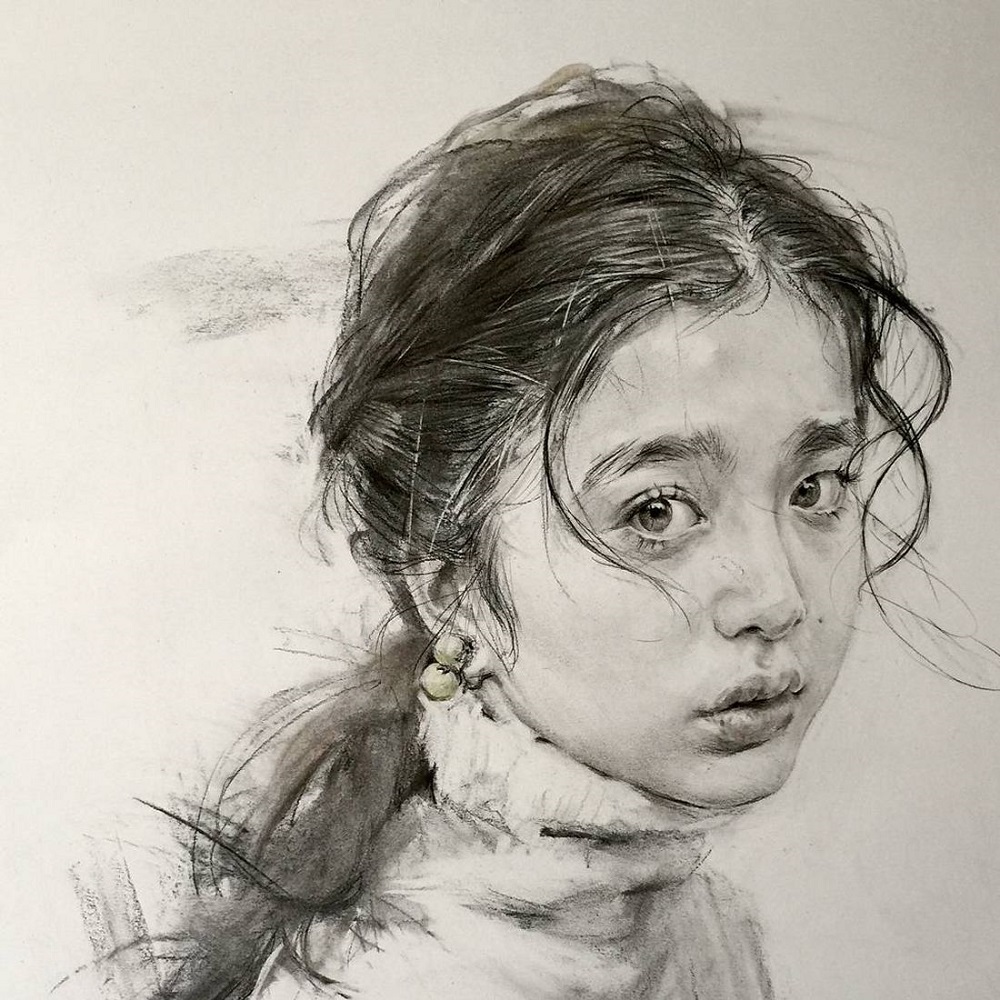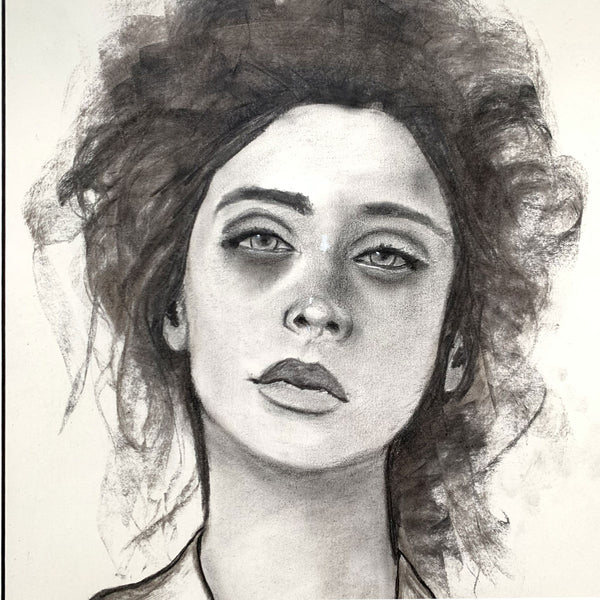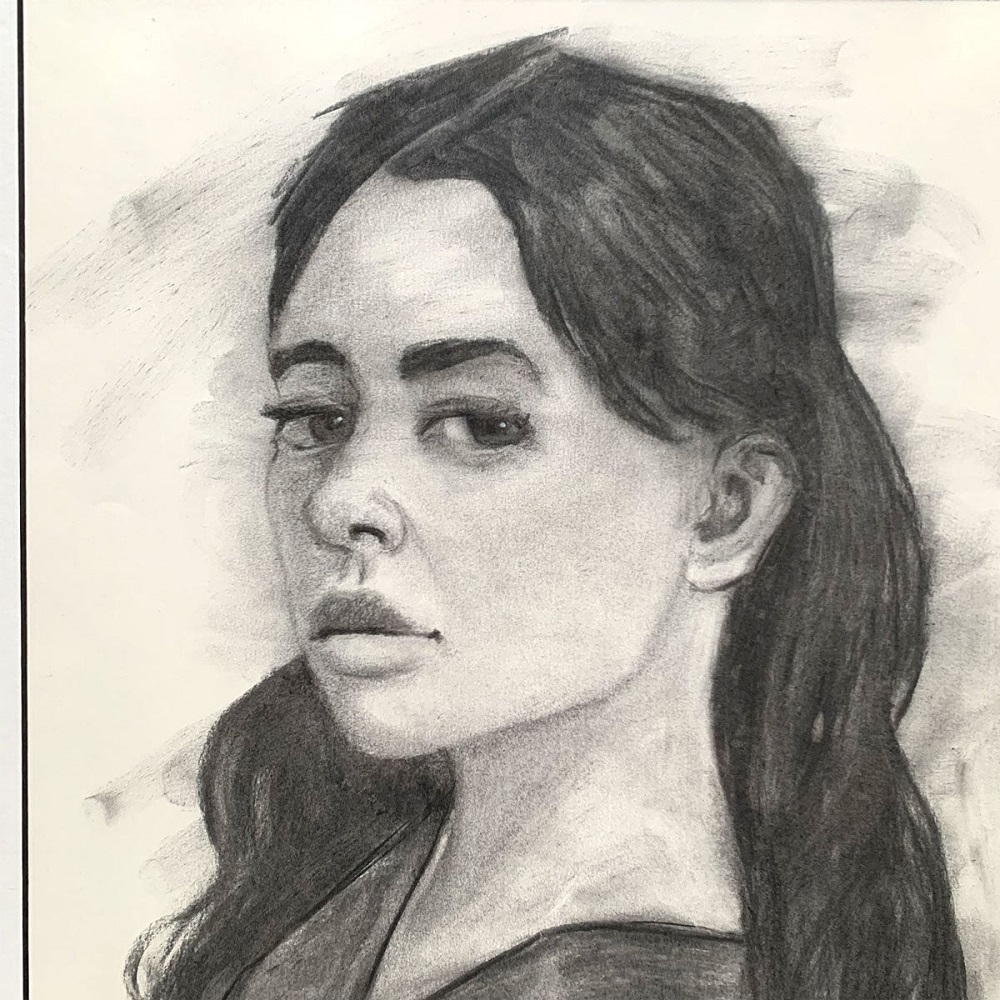Charcoal drawing is a timeless art form that allows artists to express their creativity with remarkable depth and texture. Whether you’re a complete novice or someone looking to refine your skills, understanding the essential tools and materials is crucial for creating captivating charcoal portraits. This guide will cover everything you need to start your journey into charcoal drawing face, focusing on the tools, materials, and techniques that will help you create stunning artwork.
Understanding Charcoal Types
Compressed vs. Vine Charcoal
When it comes to charcoal drawing face, the type of charcoal you choose significantly impacts the quality of your work. Compressed charcoal is made from powdered charcoal mixed with a binder, resulting in dense sticks that produce rich, dark lines. These are ideal for creating bold outlines and deep shadows. Compressed charcoal also comes in various hardness levels—from soft (which produces dark lines easily) to hard (which gives finer, lighter marks). If you want to create intricate details or broad backgrounds, having different hardness levels on hand can be beneficial.
On the other hand, vine charcoal is made from twisted vine branches that are carbonized in a kiln. This type of charcoal is softer and more fragile but offers an excellent way to build up layers and create subtle shading. Vine charcoal is great for sketching and preliminary drawings, allowing for easy erasure, blending, and adjustments. Many artists prefer to use a combination of both types to achieve various effects and depth in their drawings.
Charcoal Pencils and Charcoal Dust
For those who seek greater control, charcoal pencils provide another option. These pencils contain compressed charcoal encased in wood, making them easy to handle and perfect for detailed work. They come in different grades and can be sharpened easily for precise lines. Charcoal pencils are especially useful for adding fine details to facial features, such as eyes and lips, where accuracy is essential.
Additionally, charcoal dust can be an invaluable tool for creating smooth gradients and soft shadows. You can create charcoal dust by grinding charcoal sticks or by using dust from your workspace. Mixing it with a little water or using it dry allows you to apply it with brushes or sponges, resulting in elegant backgrounds or subtle transitions.

Paper Selection
Types of Paper
The type of paper you use can make a substantial difference in your charcoal drawing face experience. Many artists prefer slightly textured paper, known as “tooth,” which helps hold the charcoal better. Look for papers specifically designed for charcoal, as they often offer the right balance of texture and weight.
Slightly heavier paper, such as heavyweight drawing paper or fine art paper, allows for multiple layers of charcoal without warping. If you plan to blend or use a lot of charcoal dust, ensure the paper can handle it. Different brands offer various textures, so don’t hesitate to experiment and find what works best for your style.
Preparing Your Paper
You can also consider prepping your paper before starting your drawing. Some artists apply a thin layer of fixative spray to the paper to create a surface that “grabs” the charcoal better. This technique helps in preventing smudging and maintaining the integrity of lighter shades. However, be cautious with fixatives, as they may change the paper texture, so it’s best to test on a smaller area or before working on your main piece.
Essential Drawing Tools
Blending Tools
Blending tools are fundamental in charcoal drawing for achieving smooth transitions and adding depth to your artwork. Some of the most common blending tools include tortillons (blending stumps), soft cloths, and even your fingers. Tortillons are made from tightly rolled paper and are perfect for blending small areas without disturbing the underlying charcoal too much.
Soft cloths can create broader blends, especially useful for large areas like backgrounds or skin tones. Your fingers can also function as excellent blending tools, allowing for personal touch and control. Always keep a few paper towels handy for quick clean-ups or adjustments while working.
Erasers: More Than Just Correction
Erasers play a vital role in charcoal drawing. Many beginners think of them solely for corrections, but they can also be used creatively. A kneaded eraser is particularly valuable, as it allows you to lift off charcoal in a precise manner and can be shaped into various forms. It effectively creates highlights and textures within your drawing, enriching the visual interest.
Regular vinyl erasers can help in creating sharper, cleaner edges. These are particularly useful when you need to remove charcoal effectively without damaging the paper. Having different types of erasers can not only assist you in correcting mistakes but can also enhance the details in your work.

Additional Supplies
Fixatives for Preservation
Once you complete your charcoal drawing, protecting it is crucial. Charcoal, while beautiful, is also delicate and prone to smudging, so a fixative can be a lifesaver. Look for a workable fixative that you can apply in light sprays. This type helps maintain the changes you made without sealing them entirely, allowing for additional applications if needed.
When using fixatives, do so in a well-ventilated area and follow the manufacturer’s instructions carefully. A light coat usually suffices, so aim for a uniform spray by holding the can at a distance.
Optional Accessories
Although not mandatory, a few optional accessories can improve your drawing experience. A sturdy drawing board provides a firm surface to work on, especially if you prefer to draw while standing or on the go. Additionally, invest in high-quality sketchbooks to compile your charcoal works, allowing you to document your progress as you grow.
Consider keeping a portable bag or case for your supplies. Having everything organized makes it easier to transport your materials for outdoor drawing sessions or classes.
Techniques for Charcoal Drawing
Basic Mark-Making Techniques
Understanding basic mark-making techniques will significantly enhance your charcoal drawing skills. Start with lines and shapes using different pressures and angles. Lighter strokes can create delicate details, while harder pressure can produce bold and expressive lines. Experimenting with different types of strokes—like hatching, cross-hatching, and stippling—can help you understand how to represent forms and shadows effectively.
Developing your style will take time, and practicing these techniques can lead to more nuanced artwork. Try sketching simple shapes or objects around you to experiment and reinforce your learning.
Creating Depth and Texture
One of the charm points of charcoal is its ability to create depth and texture. Start by layering different tones using both compressed and vine charcoal. Apply lighter shades first, gradually building up to darker tones. Always remember to blend and refine areas to give the piece a polished look.
Use the kneaded eraser to create highlights in particular areas, which can add considerable depth to facial features, such as the nose or cheekbones. Texture can be introduced through varied mark-making and careful application to avoid flat appearances.

Learning from Reference Materials
Sources of Inspiration
Finding reference materials can significantly enhance your charcoal drawing practice. Photographs, online tutorials, and art books can all provide inspiration. Consider studying works by established charcoal artists, noting how they approach form, shading, and detail. This research can inform your understanding of techniques and styles, offering new directions for your own artwork.
Consider visiting art galleries or local exhibitions featuring charcoal drawings. These venues provide firsthand exposure to different styles, techniques, and applications of charcoal that can inspire you to explore your unique artistic voice.
Practice with Live Models
If you wish to take your charcoal drawing skills to the next level, consider drawing from live models. This practice helps sharpen your observational skills and understanding of anatomy. Working with a model allows you to study varying angles, lighting, and expressions, giving you a broader perspective on how to represent forms accurately.
Local art schools often offer life drawing sessions, and community art centers may host events where you can draw from live subjects. This variety of experiences will enrich your understanding of motion, expression, and proportions.
Being Patient and Persistent
Developing Your Skills
Charcoal drawing is an art form that thrives on practice and perseverance. As a beginner, it’s vital to remember that improvement comes with time. Allow yourself the grace to make mistakes; each error serves as a learning opportunity that brings you closer to mastering the medium.
Set aside dedicated time for practice. Creating a regular drawing routine can lead to significant growth over weeks and months. Experiment with different subjects and styles to find what resonates with you, and keep experimenting until you feel comfortable expressing yourself through charcoal.
Finding Your Artistic Voice
Ultimately, patience is the key to finding your artistic voice. Embrace multiple styles and techniques as you explore charcoal drawing. Each piece you create adds to your experience and understanding, developing your unique perspective.
Engaging with other artists, whether through online communities or local workshops, can also provide valuable feedback and encouragement. Sharing progress, participating in challenges, or collaborating can enhance your journey, bringing joy and motivation to your artistic pursuits.
Start Your Charcoal Journey
Beginning your journey into charcoal drawing face opens the door to endless possibilities for creative expression. By understanding essential tools and materials, practicing various techniques, and continuously seeking inspiration, you can develop your skills and create stunning artwork.
Patience and persistence will guide your evolution as an artist, and the beauty of charcoal will become an extension of your artistic voice. With each sketch, you move closer to sharing your vision with the world. So gather your tools, find inspiration, and let your creativity flow onto the page through the expressive medium of charcoal.